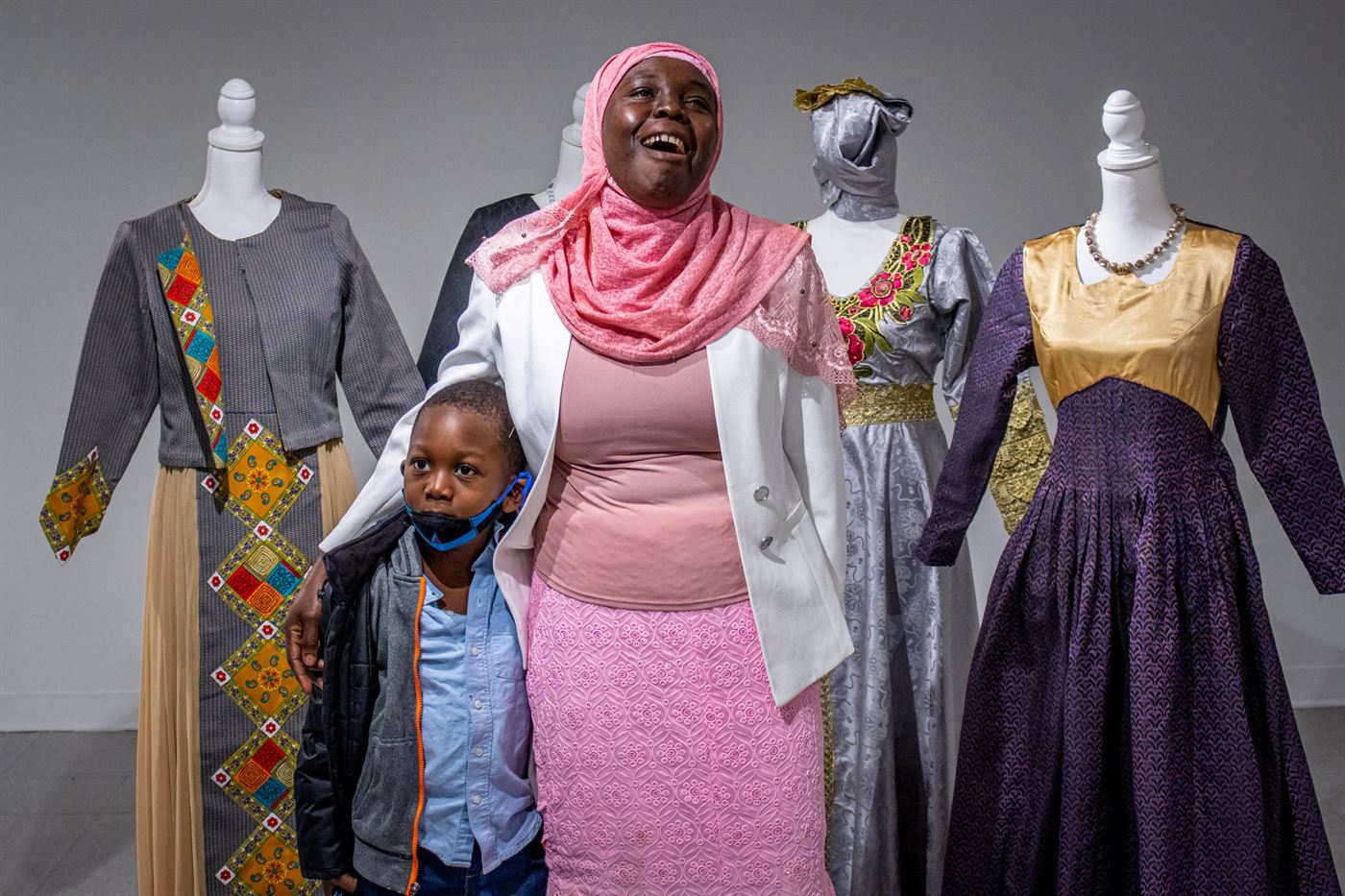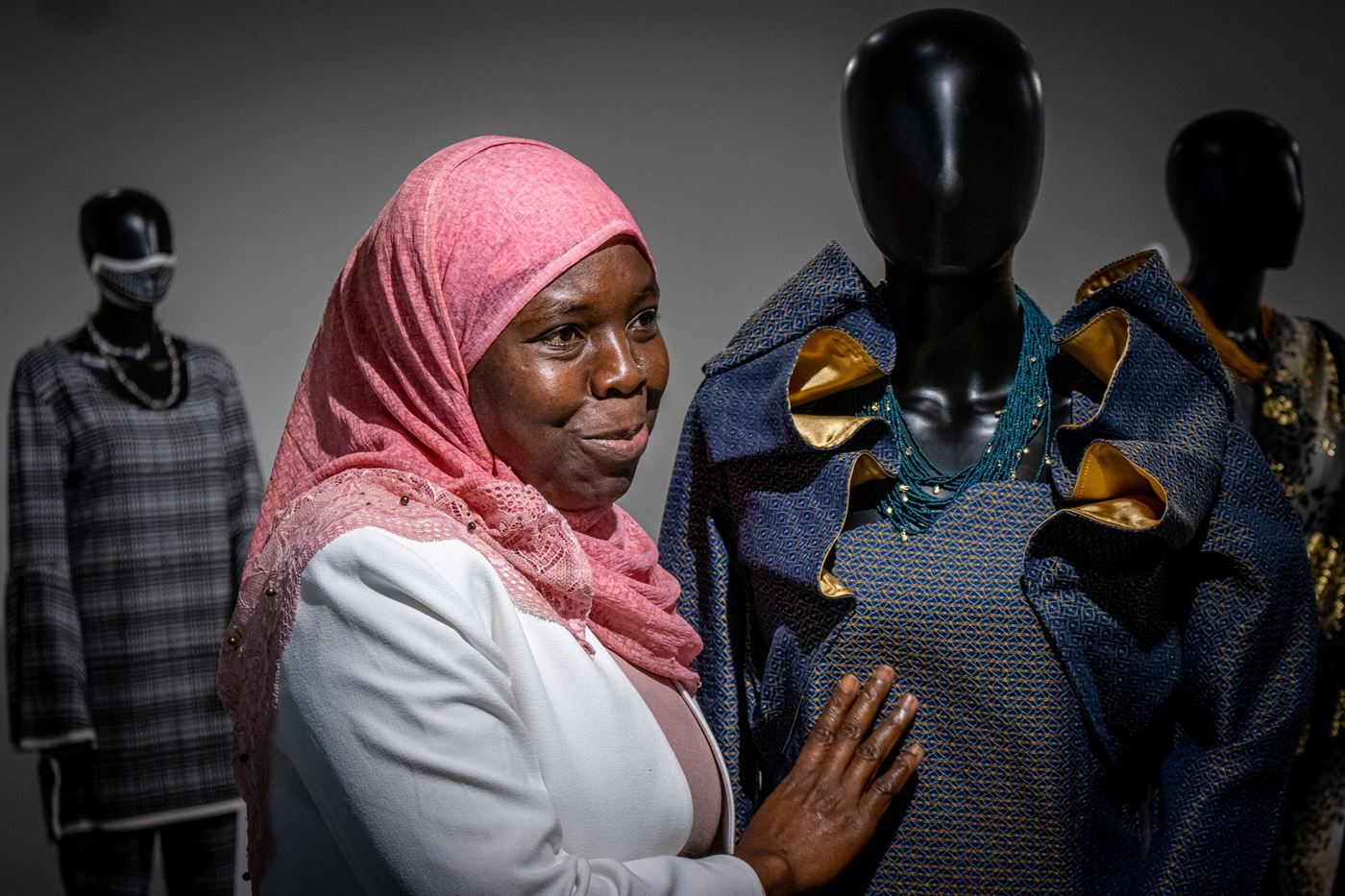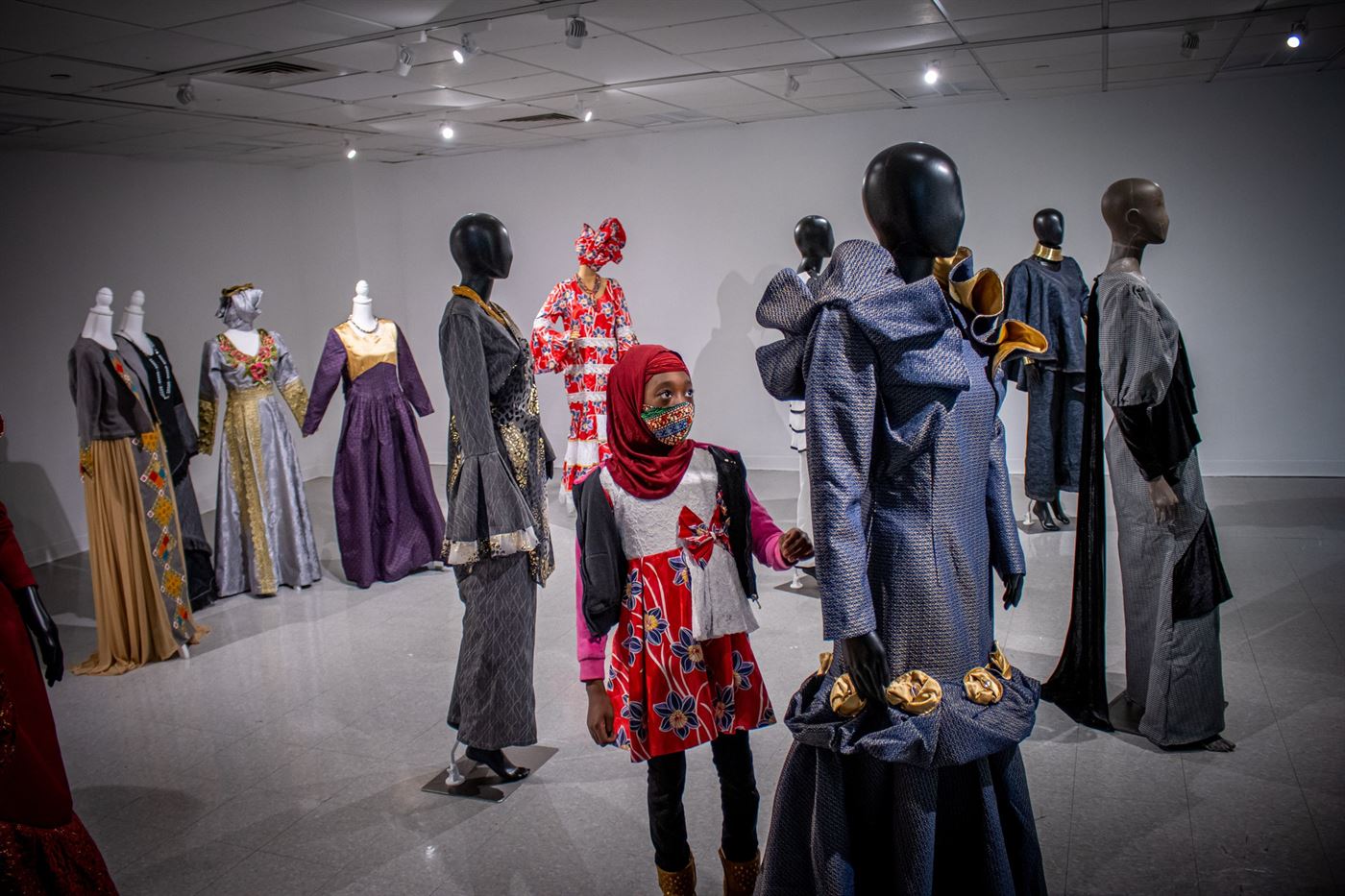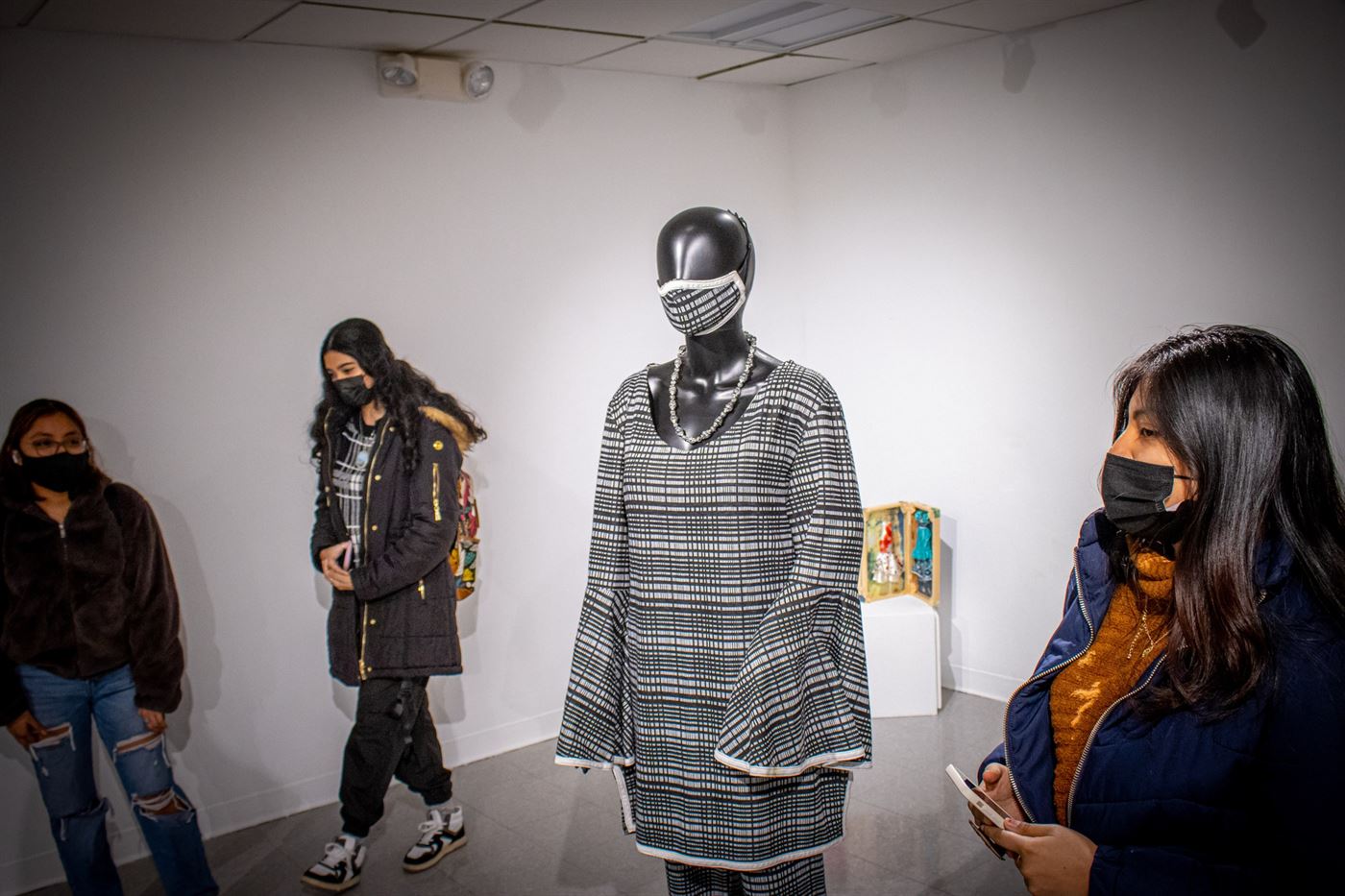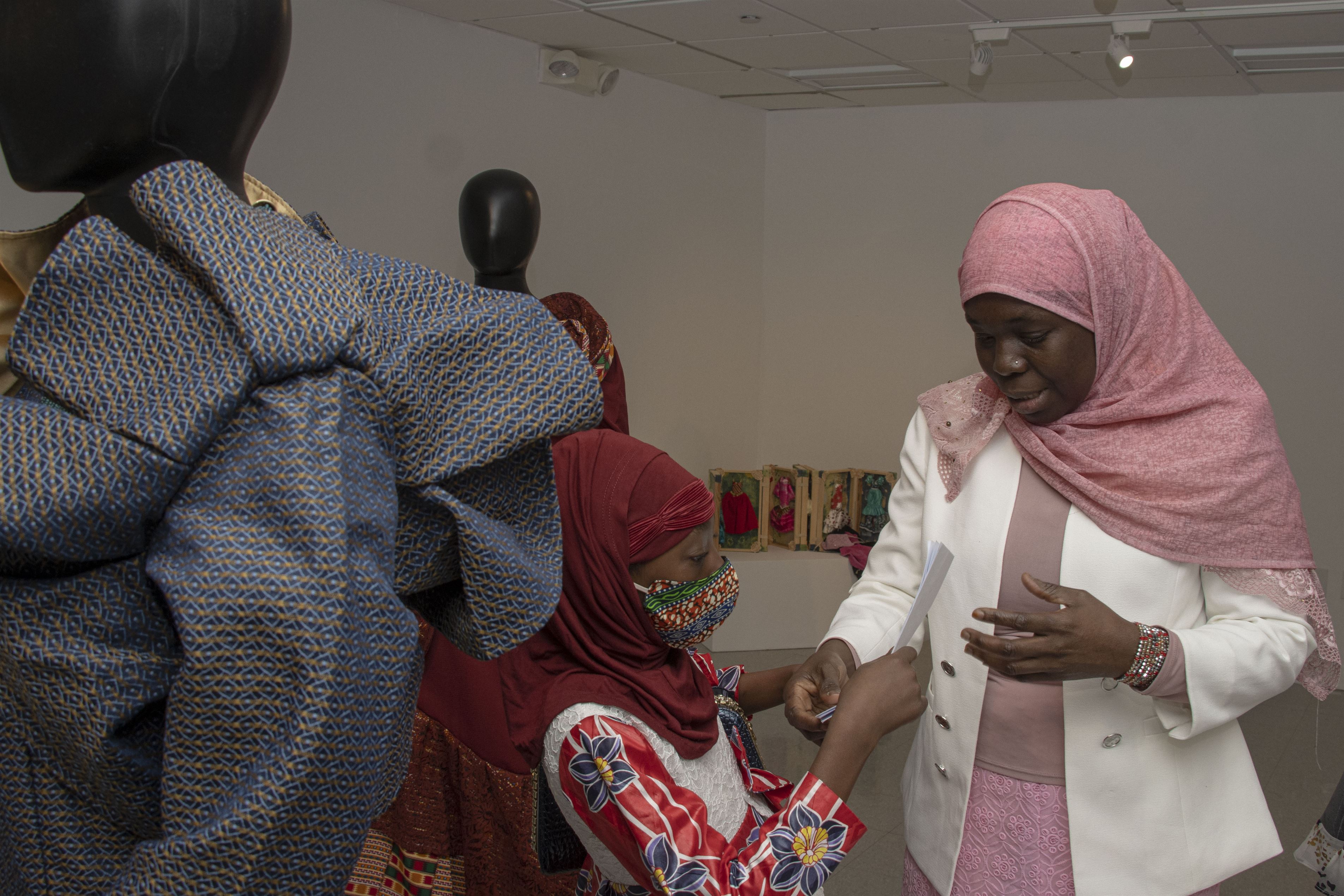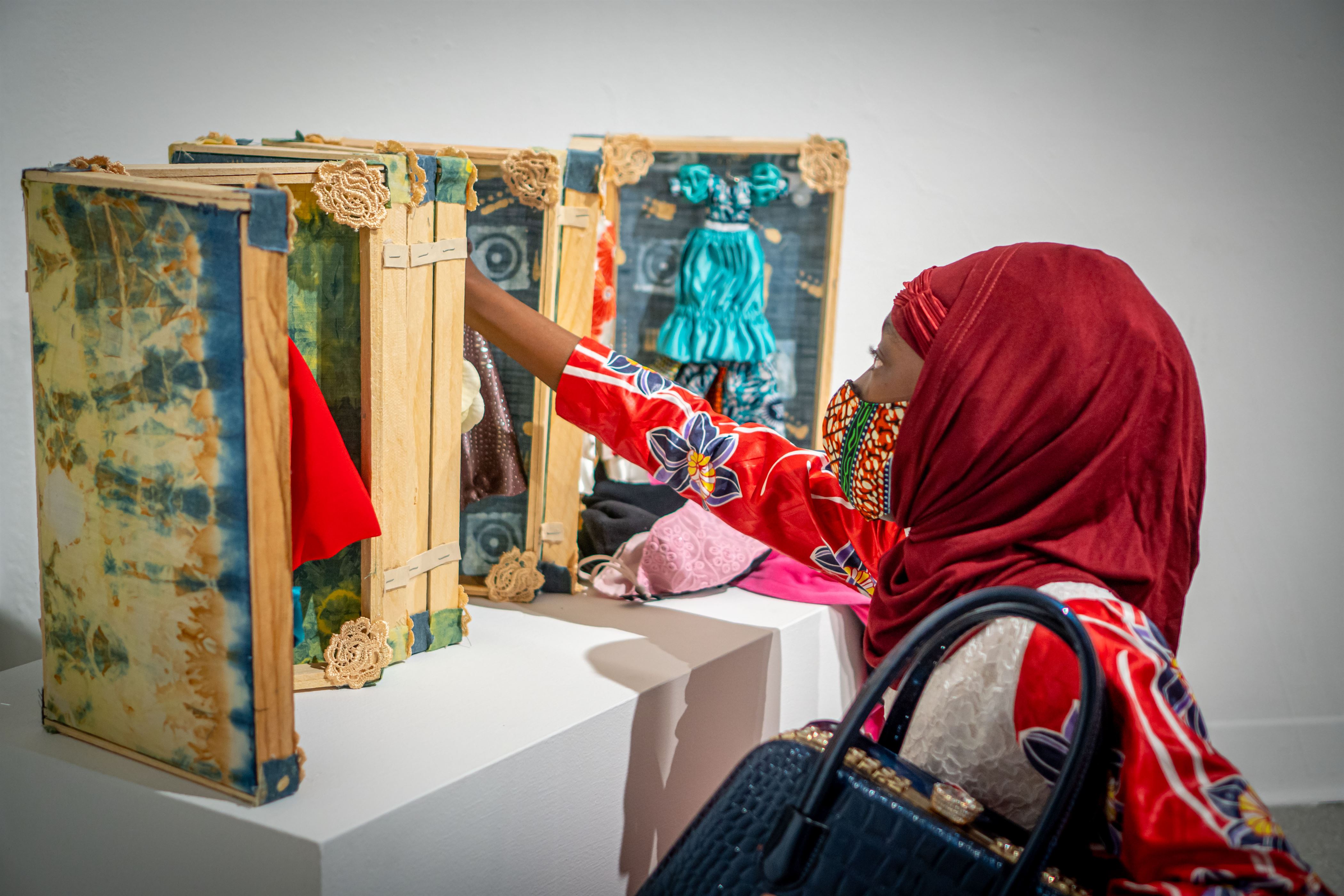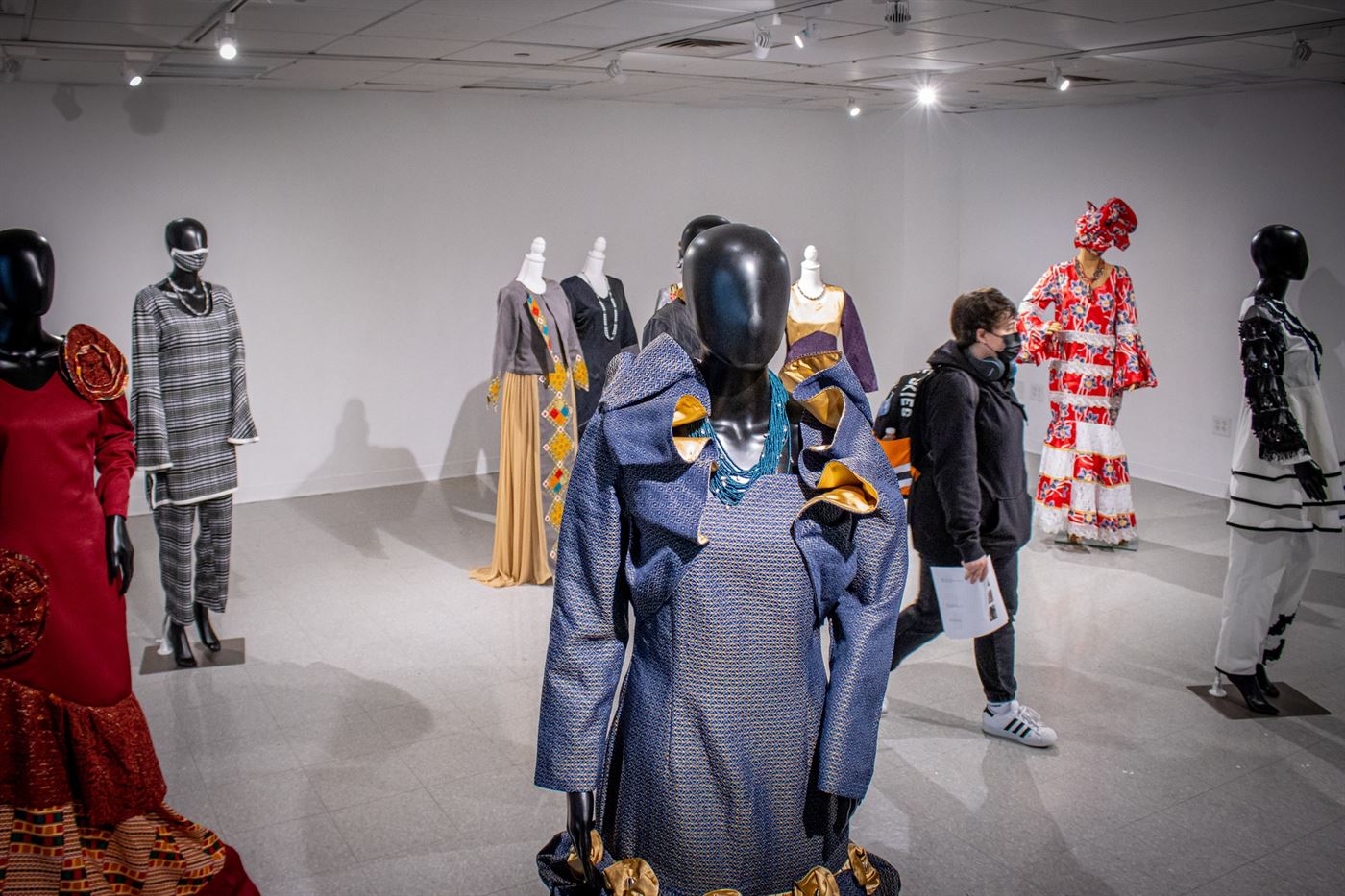The department of art and design of Montclair State University held a fashion exhibit titled “Forgotten African Queens” by former student Safiatou Akondo on April 5.
In her home in Togo, West Africa, designing toys and dresses out of paper as a little girl, Akondo dreamed about being a fashion designer, in a place that deprived her of that opportunity. The former fashion studies major reflected upon the stories of African queens but also the lack of representation of African designs in the fashion industry.
Akondo explains how flea markets in Africa are filled with Western hand-me-downs which made traditional African garb not so accessible. The mass production put shops that sell African garments out of business. Akondo argues this deprives the unique garments of being seen worldwide.
Making the traditional African garb requires more work, which leaves Africans to more convenient options.
“I think Africa is just the last place where they dump all those unnecessary used clothes – it seems like it’s a dumpster for fashion,” Akondo said. “Someone has to do something and I think I’m willing to do so.”
She created her collection, “Forgotten African Queens,” back when she participated in the Atlantic City Fashion Week (ACFW). During the fashion week, the designers were provided with furniture upholstery and fabrics to use in their collections. Akondo’s mission to keep African heritage alive motivated her to create designs that mirror African queens. The queens range from Nefertiti the Queen of Ancient Kemet to Kandake the Empress of Ethiopia.
“I researched queens in Africa that I myself didn’t even know about,” Akondo said. “I learned such beautiful stories about them [which] inspired me to make this piece.”
She further stated inclusivity in the industry can fix the overwhelming issue of African garments needing more of a platform in fashion.
“Not a lot comes out of Africa,” Akondo said. “If there’s a fashion week going on, there [are] only those very few people from Africa that can show what Africa is about.”
Despite Africa’s lack of representation in the department of art and design, she received her Associate of Science in Business and Marketing in Togo, West Africa. She then traveled to America to receive an education in fashion, which led her to Montclair State, where she graduated in the fall of 2021.
Since receiving her education at Montclair State, Akondo emphasizes that it stimulated her desire to help people in Africa who want to receive an education in fashion. She empathizes with the predicament they’re in but also recognizes where they could be.
“After high school, there are people [in Africa] who want to go into fashion but [find it] difficult seeking out those opportunities,” Akondo said. “They really want that but don’t have the opportunity.”
Akondo said educating aspiring African designers enforces different perspectives the fashion industry needs. It imposes the mass production of Western clothing to take a seat so traditional African fashion can take the runway. Akondo argues this allows future designers to see themselves on platforms.
“African garb is not really out there in the fashion world,” Akondo said. “So I really want to bring up Africa [and] the beauty of African designers. The idea of having Africans, like the way we make clothes, especially our colorful fabric, is essential [for] the world to thrive.”
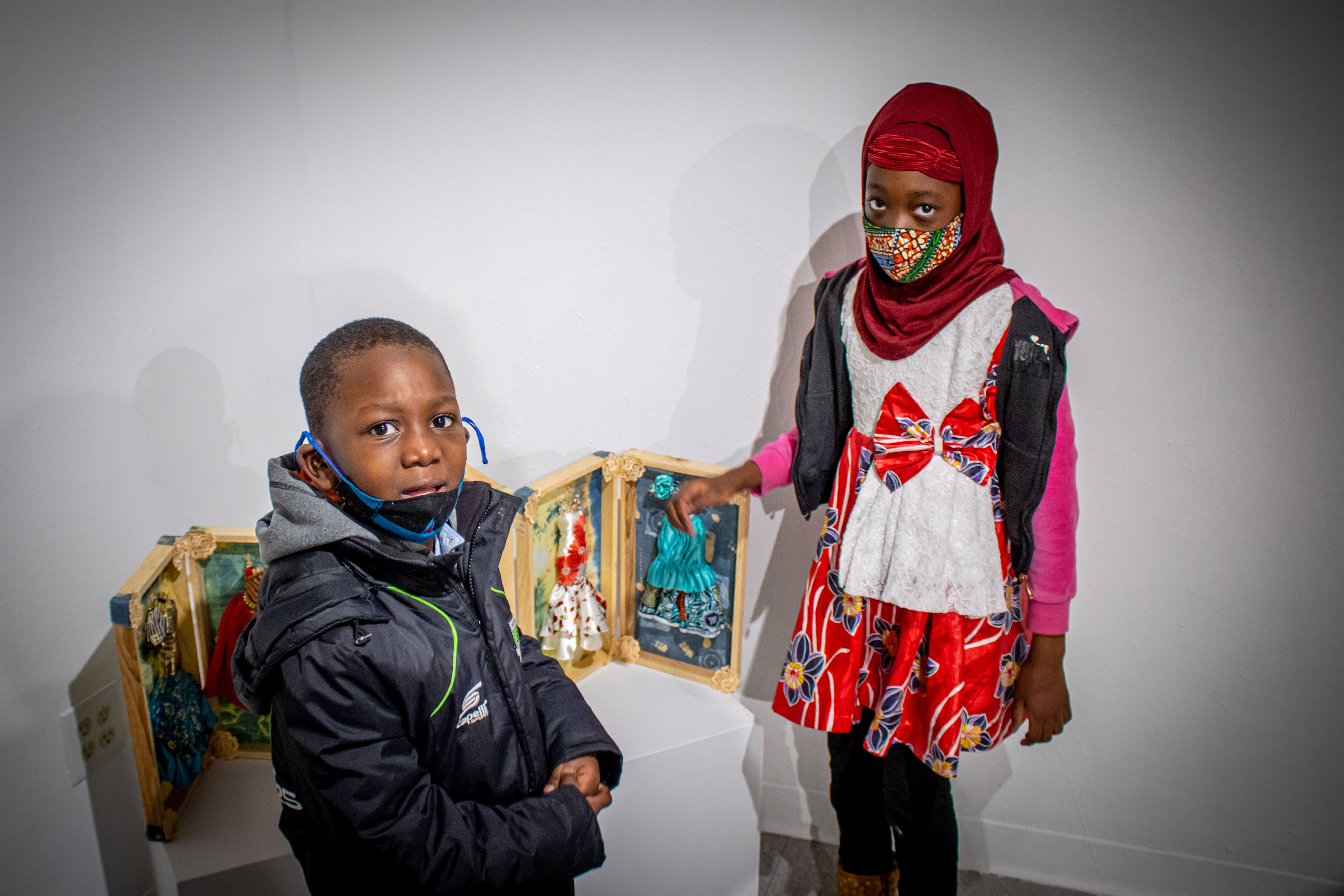
(Left to right): Mabruk and Nazeeha, Safiatou Akondo’s children, support her work.
John LaRosa | The Montclarion
From working 11 hours a day at her job to going home to take care of her kids, she saved time during her busy schedule to make her visions a reality.
“Hopefully people who look at my designs will see something in me that I myself cannot see,” Akondo said. “Sometimes it’s hard to believe in yourself being that good and hopefully people will see something good about the designs I have.”
May Chae, Akondo’s professor and mentor in the department of art and design, was very pleased with her work and says she was one of her most hardworking students.
“She’s very creative and intelligent when it comes to developing her ideas and constructing designs so I knew she would have a great collection,” Chae said. “I’m very proud of her and I know people will appreciate her creativity.”
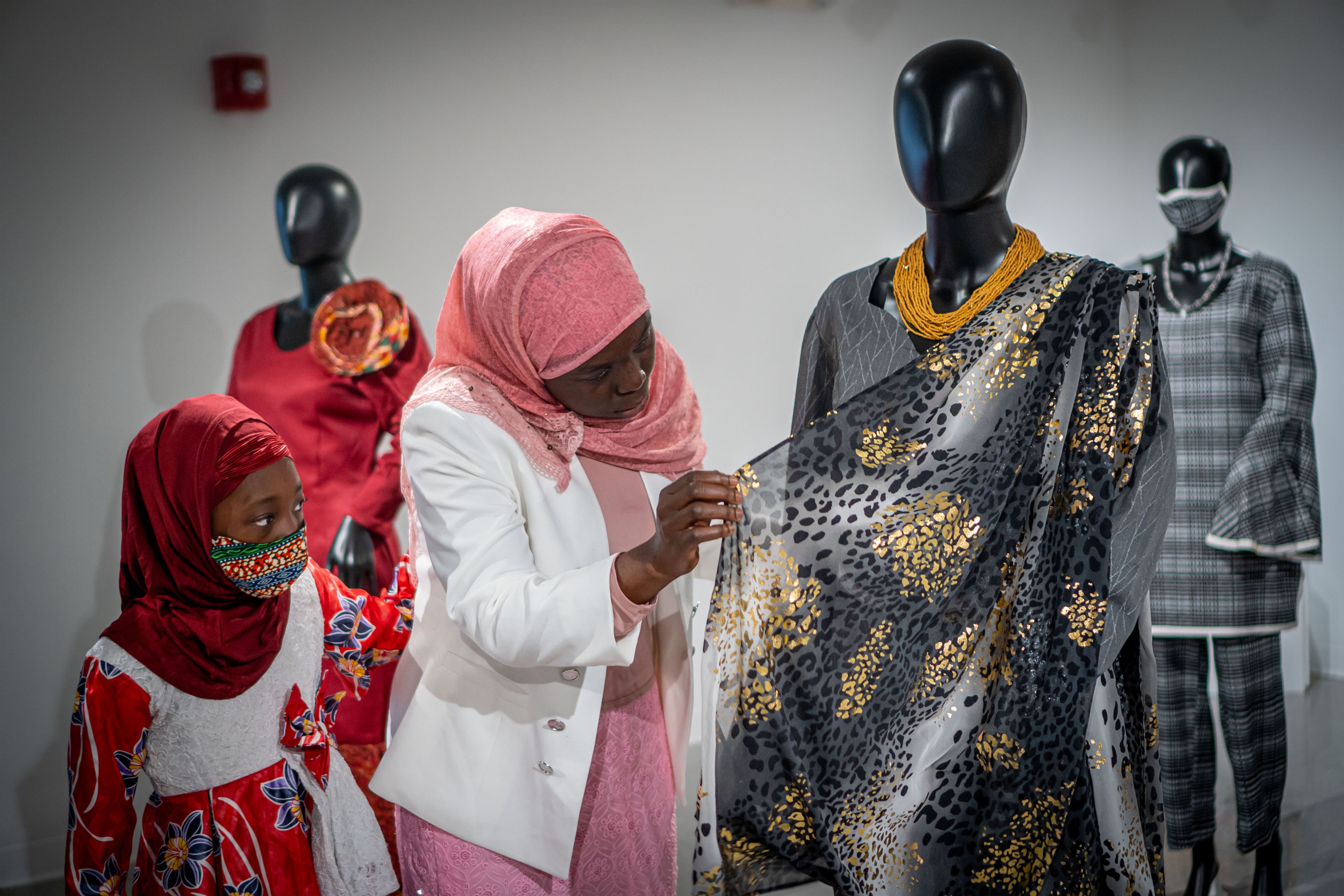
(Left to right): Nazeeha, Saphiatou Akondo’s daughter, and Akondo admire one of the looks in the collection.
Lynise Olivacce | The Montclarion
Nayana Sturzeneker, a junior animation and illustration major, said she loves the garment with the leopard print.
“I’m a sucker for gradients,” Sturzeneker said. “If you give me a gradient, I immediately fall in love with it. Minimalistic colors really do it because it’s just all neutral but I love the color pop.”
Allison Castillo, a sophomore visual arts major, said she loves the red piece with the hat that ties everything together.
“It’s very reminiscent [because] I’m Hispanic so the bright colors remind me a lot of my Latina culture,” Castillo said.
The lack of inclusivity in the fashion industry and the powerful stories the African queens possess motivates Akondo to keep their legacy alive and to challenge the fashion industry through her collection.
“We might be forgotten, or we might be behind, but we are moving up in the world and the motherland has something to show,” Akondo said.

